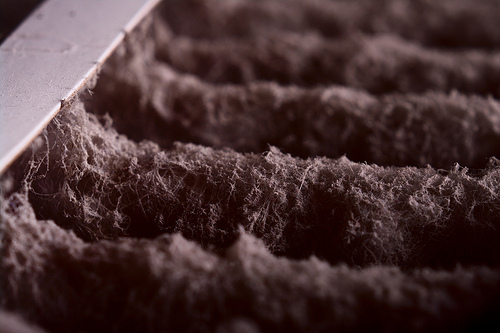We spend about 90 per cent of our time indoors and airborne particles are one of the greatest indoor health risks. Research studies have shown that the majority of particles that are breathed indoors come from fine particulate matter (PM2.5). But before the air quality in residential and commercial buildings can be fully assessed, we need to first understand the composition and amount of indoor particles.
Jeffrey Siegel, an associate professor in the University of Toronto’s Department of Civil Engineering, has been investigating the use of heating, ventilation, and air conditioning (HVAC) filters as a new sampling method to detect airborne particles. In this SOCAAR seminar Siegel discusses what we can learn about human exposure to indoor contaminants from HVAC filters.

Looking at a filter up close (Photo: flickr user 5¢)
Siegel and his colleagues have demonstrated that filters can be useful passive sampling devices for indoor particle contaminants. But he says they are focusing on the identification stage of the different microbial communities that appear in different buildings.. The results are semi-quantitative in nature and show the relative occurrence of various microorganisms.
Previously, microbiologists have used filters to investigate building related illnesses and as a means of looking at the microbiology of indoor buildings. Siegel and his colleagues have analysed the dust deposited on a variety of filters from residences and big-box retail stores. They found differences in fungal and bacterial communities that exist in various indoor environments, varying based on human occupancy patterns, building location, season, building type/use, and building age and history. They also showed the filters could be used to detect patterns of other particle-bound contaminants such as heavy metals and flame retardants.
Siegel believes filter forensics could ultimately be a low-cost approach to understanding indoor exposure hot-spots and the spread of particle plumes. He is now looking to improve the technique by obtaining more quantitative data. One way is by combining dust extraction with data from filters such as the system run-time, air flow rate through the filter, and the filter efficiency. He is also investigating which contaminants can and cannot be detected by working with a hospital in Chicago to look at the spread of bacteria community of hospital acquired infections.
